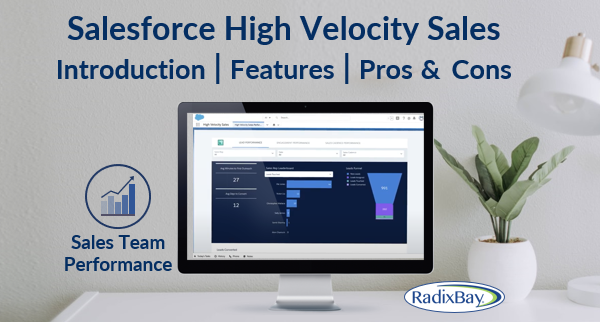
Introduction to Salesforce High Velocity Sales
Over the last few years, sales cadence tools have become increasingly popular. The tools automate the repeatable steps of a sales process such as scheduling follow-up calls, automating multi-channel touchpoints, and displaying reminders to schedule meetings. The goal of all sales cadence tools is to provide automations that reduce the amount of time sales reps spend performing manual and mundane administrative activities. In addition, the products also provide metrics that help organizations evaluate both sales process and sales rep performance.
Salesforce capitalized on the community’s interest in sales cadence tools by launching their High Velocity Sales offering in September of 2018. High Velocity Sales (HVS) is an add-on product that can be purchased from Salesforce and integrated into a Salesforce instance.
The offering can be appropriately described as a “sales cadence assistant.” It acts as an automated partner to help streamline a sales rep’s daily activities by:
- Automatically sending standardized emails to prospects or clients
- Setting reminders for more personal follow-ups
- Tracking progress through the entire sales lifecycle
- Integrating tools like Sales Dialer and In-Box to enable sales reps to use one interface to perform most of their activities
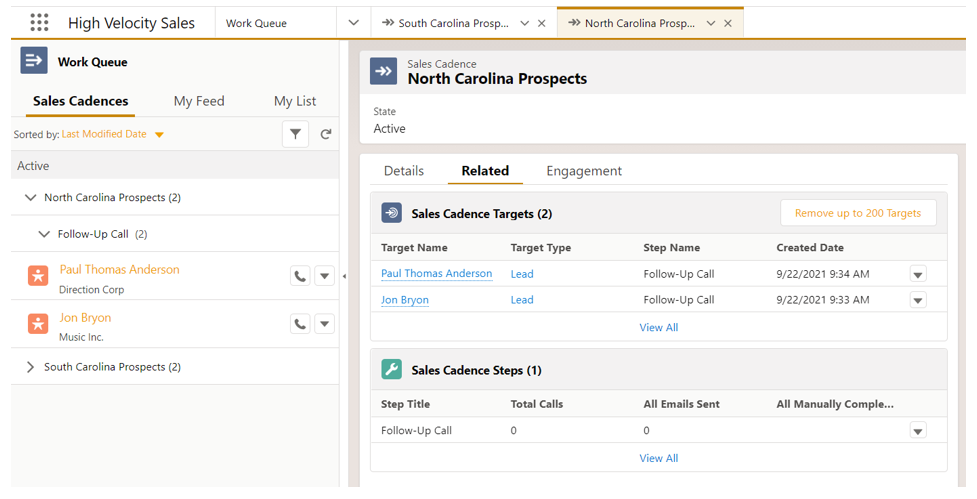
High Velocity Sales reduces the amount of time associated with managing multiple sales prospects, freeing sales reps to focus on what’s important – closing deals.
HVS is not the first sales tool of its type. It is a direct response from Salesforce to a growing market of similar tools such as Salesloft and Outreach, two of the industry leaders. Creating its own first-party alternative allows Salesforce to provide both a world-class CRM platform and an easily integrated sales automation tool.
Salesforce High Velocity Sales – Strengths
The biggest advantage that HVS has over its competitors is that it has a direct integration with the Salesforce instance, instead of being a third-party connector application. Direct integration enables a quicker, simpler configuration during initial setup and facilitates ongoing administration. In addition, admins benefit from a reduced learning curve as HVS uses Salesforce data, fields, objects, and setup interface.
High Velocity Sales also provides other advantages such as a single login and a familiar end-user interface. This helps reduce sales rep ramp-up time as they will be working in an environment that has a similar look and feel as their Salesforce instance.
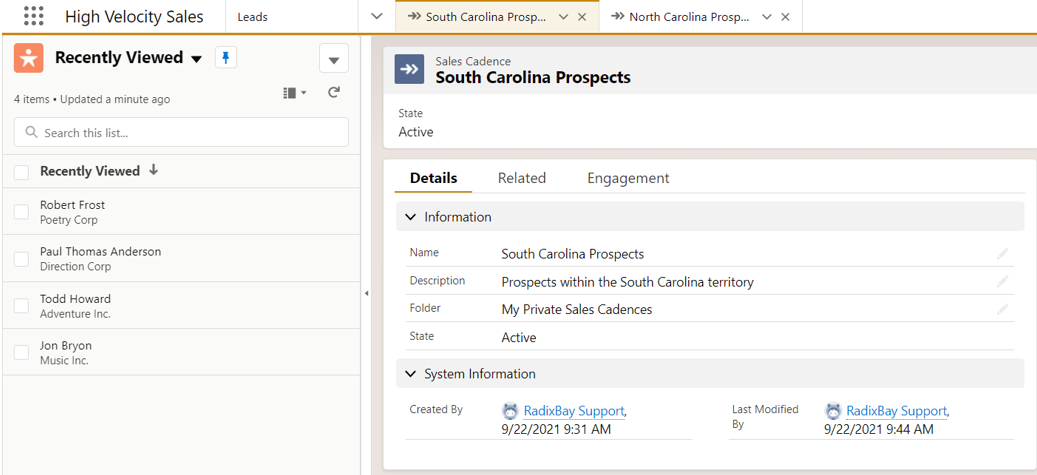
Implementing a new product that changes the workflows of an existing business process is challenging. Salesforce customers that choose HVS as their sales cadence platform benefit from a more integrated and familiar environment than competing offerings.
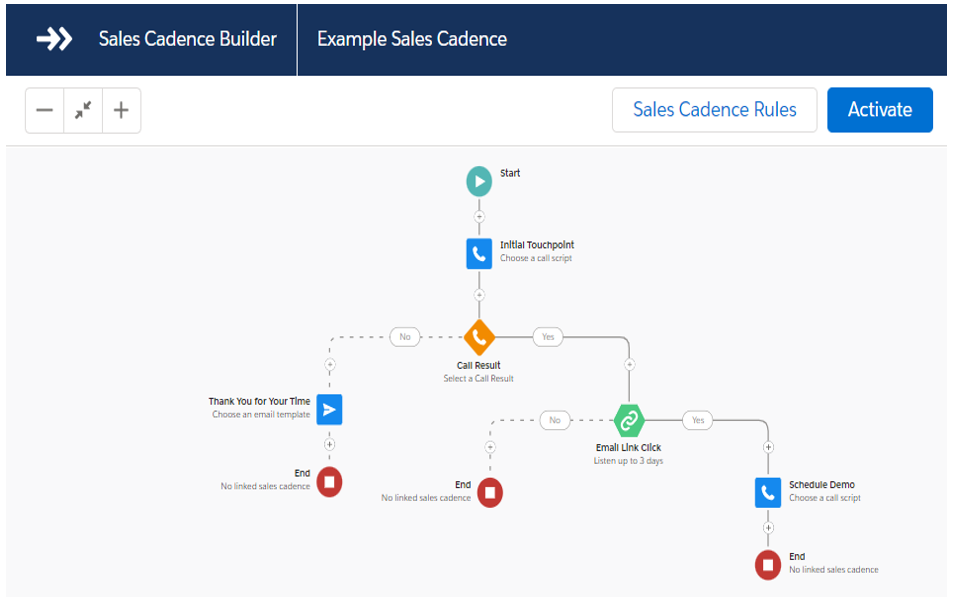
Salesforce High Velocity Sales – Weaknesses
While its direct integration with Salesforce does provide HVS with a unique advantage over its competitors, the product is relatively new when compared to other vendors in this space. Sales cadence tool providers like Salesloft and Outreach have had several years to refine their products and develop in-depth documentation and support resources. HVS, being a relatively new market offering, does not have the breadth of documentation and robust feature set when compared to its more mature competitors. With each Salesforce release, the documentation and functionality of HVS continue to grow, but the product still lags behind other offerings in overall features, documentation, and support resources.
In addition, best-of-breed competitors like Salesloft are able to focus solely on sales process automation, while Salesforce must divide its attention across a broad range of offerings. As an example, Salesloft provides over 100 different integrations with other products, which is far greater than the number of integrations provided by HVS.
HVS competes with many other products on Salesforce’s idea board, which is entirely crowd-sourced. As a result, it can take a significant amount of time for a recommendation from the community to get traction and gain visibility from Salesforce.
Finally, a common concern for many HVS users is the product’s relatively limited reporting features. Since HVS uses the same standard reporting functionality as Salesforce, it can be slightly clunky to pull more specific data that can provide insight into what is and isn’t working in a sales cadence. By comparison, Salesloft has more focused reporting features, which allow users to dive deeper into the strengths and weaknesses of a sales cadence.
Check out a couple of examples of Salesloft and High Velocity Sales report screens below. Please note that the screenshots are not an exact comparison as the reporting features for the two products differ in flow, drill-down capabilities, and content.
Salesloft
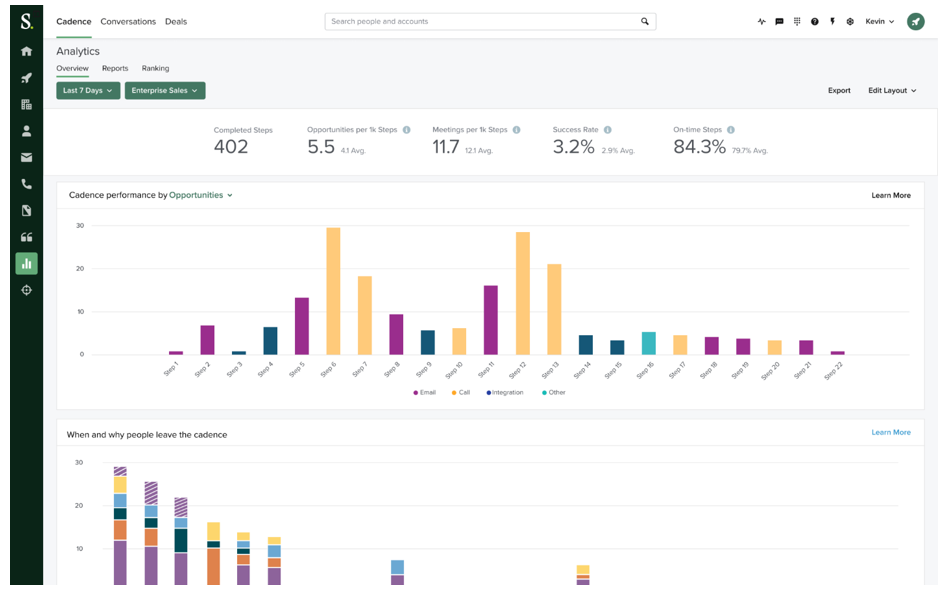
Image source: Salesloft Analytics and Reporting
High Velocity Sales
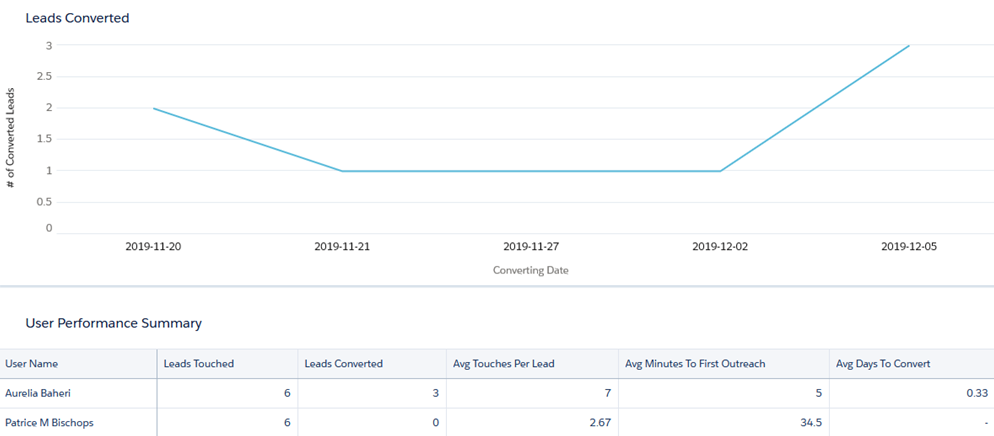
Image source: Analytics for High Velocity Sales
Conclusion:
HVS is a promising pipeline efficiency tool for sales reps. Although its feature set may not be as robust as some of its sales cadence pure-play competitors, its ease of implementation and use make it a worthwhile alternative to competing offerings.

I hope you enjoyed my article on Salesforce High Velocity Sales.
To learn more about our Salesforce services and how RadixBay can help, please visit our RadixBay Salesforce Center of Excellence.
Tyler Shobe
Salesforce Certified Administrator